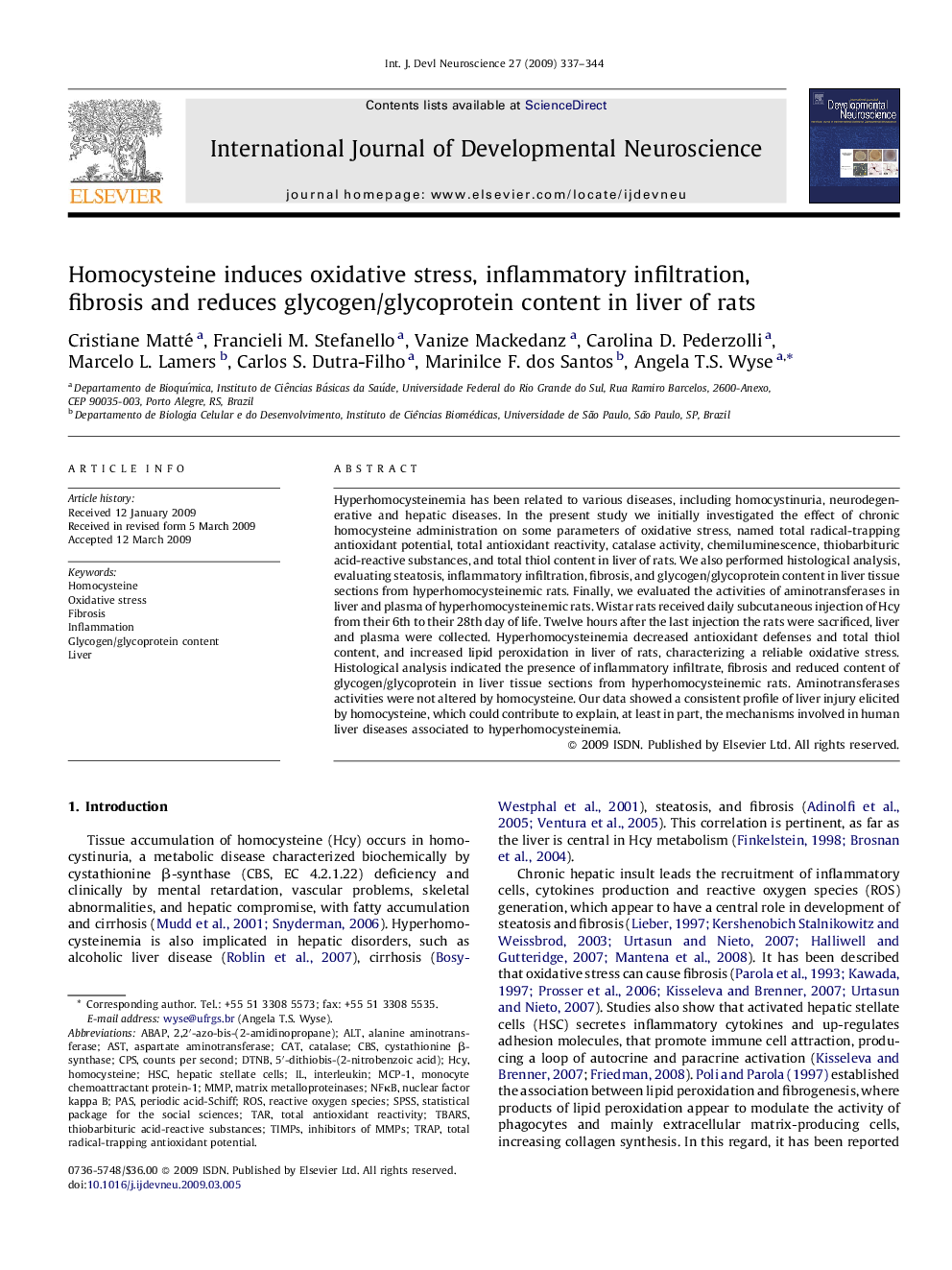| Article ID | Journal | Published Year | Pages | File Type |
|---|---|---|---|---|
| 2786965 | International Journal of Developmental Neuroscience | 2009 | 8 Pages |
Hyperhomocysteinemia has been related to various diseases, including homocystinuria, neurodegenerative and hepatic diseases. In the present study we initially investigated the effect of chronic homocysteine administration on some parameters of oxidative stress, named total radical-trapping antioxidant potential, total antioxidant reactivity, catalase activity, chemiluminescence, thiobarbituric acid-reactive substances, and total thiol content in liver of rats. We also performed histological analysis, evaluating steatosis, inflammatory infiltration, fibrosis, and glycogen/glycoprotein content in liver tissue sections from hyperhomocysteinemic rats. Finally, we evaluated the activities of aminotransferases in liver and plasma of hyperhomocysteinemic rats. Wistar rats received daily subcutaneous injection of Hcy from their 6th to their 28th day of life. Twelve hours after the last injection the rats were sacrificed, liver and plasma were collected. Hyperhomocysteinemia decreased antioxidant defenses and total thiol content, and increased lipid peroxidation in liver of rats, characterizing a reliable oxidative stress. Histological analysis indicated the presence of inflammatory infiltrate, fibrosis and reduced content of glycogen/glycoprotein in liver tissue sections from hyperhomocysteinemic rats. Aminotransferases activities were not altered by homocysteine. Our data showed a consistent profile of liver injury elicited by homocysteine, which could contribute to explain, at least in part, the mechanisms involved in human liver diseases associated to hyperhomocysteinemia.
